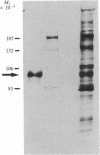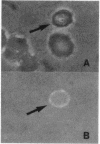Abstract
A system has been developed that allows efficient production of monkey monoclonal antibodies from owl monkeys. Splenocytes or peripheral blood lymphocytes from monkeys immune to the human malarial parasite, Plasmodium falciparum, were fused with P3X63 Ag8.653 mouse myelomas. The resulting hybridomas were screened by an indirect fluorescent antibody test for the production of monkey monoclonal antibodies (mAb) reactive with P. falciparum. Most of the mAb reacted with the P. falciparum merozoites and immunoprecipitated a parasite-derived glycoprotein having a relative molecular weight of 185,000. These mAb gave a minimum of five different immunoprecipitation patterns, thus demonstrating that a large number of polypeptides obtained when parasitized erythrocytes are solubilized share epitopes with this large glycoprotein. In addition, mAb were obtained that reacted with antigens associated with the infected erythrocyte membrane. One of these mAb bound a Mr 95,000 antigen.
Full text
PDF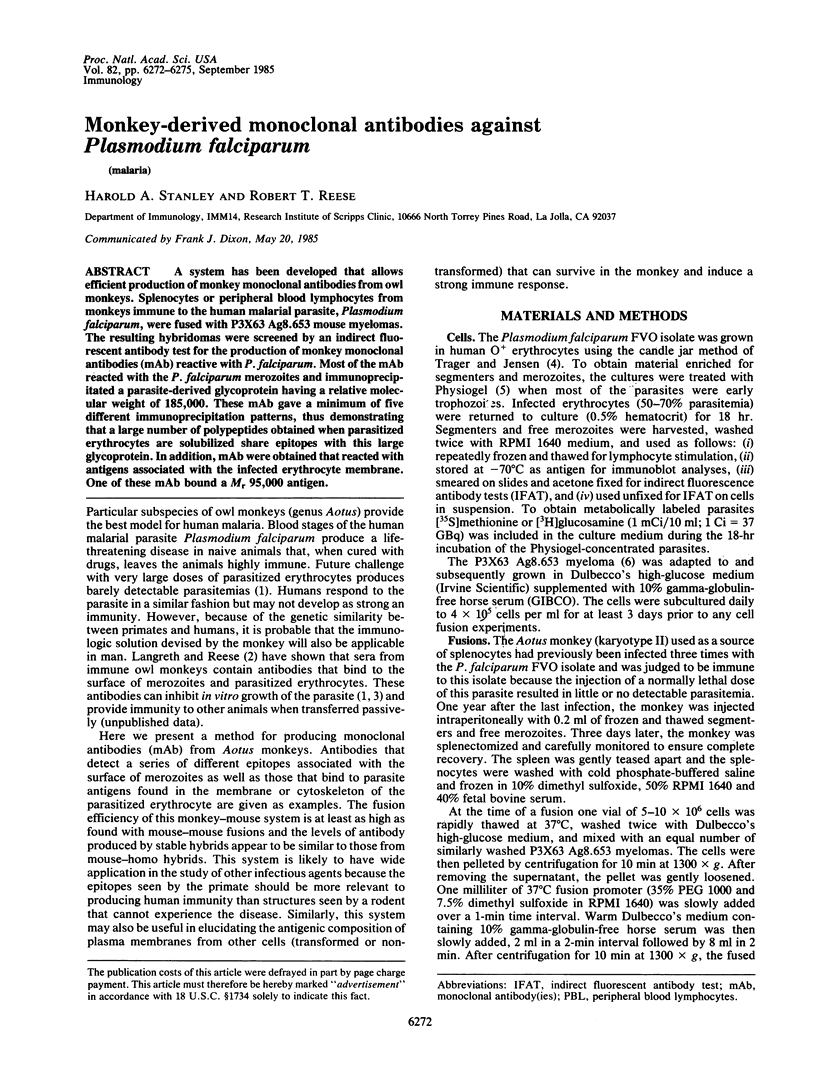
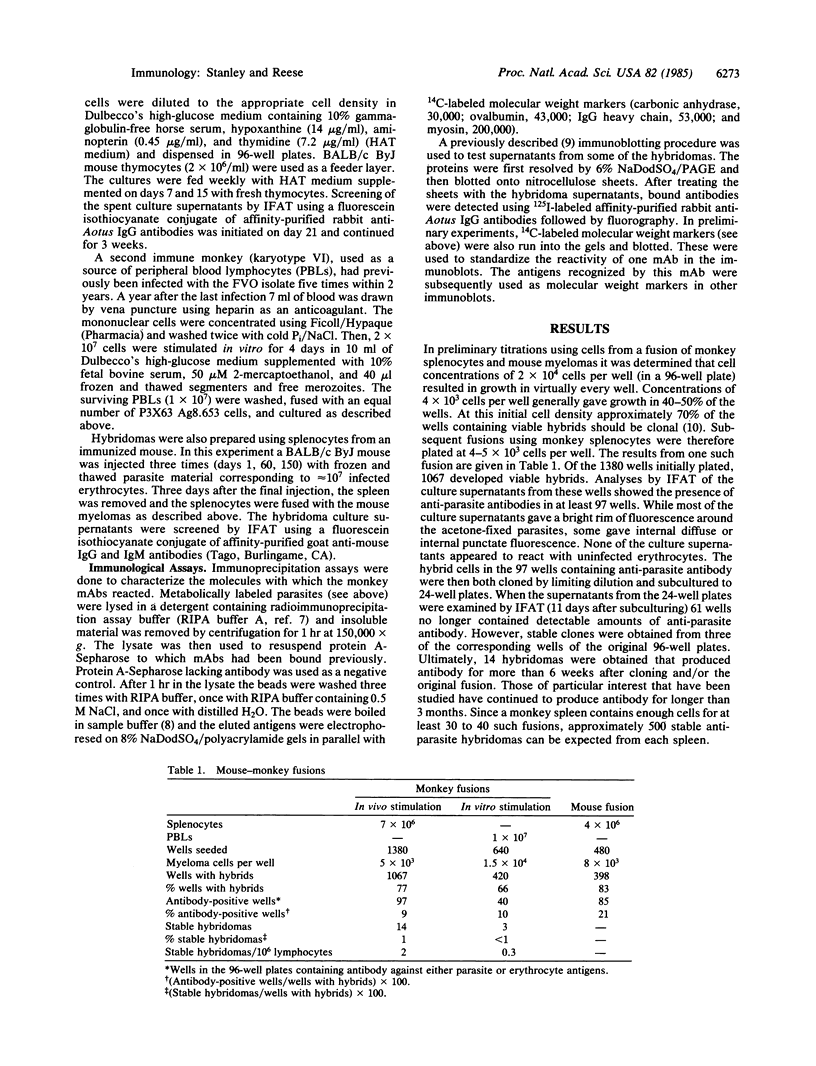
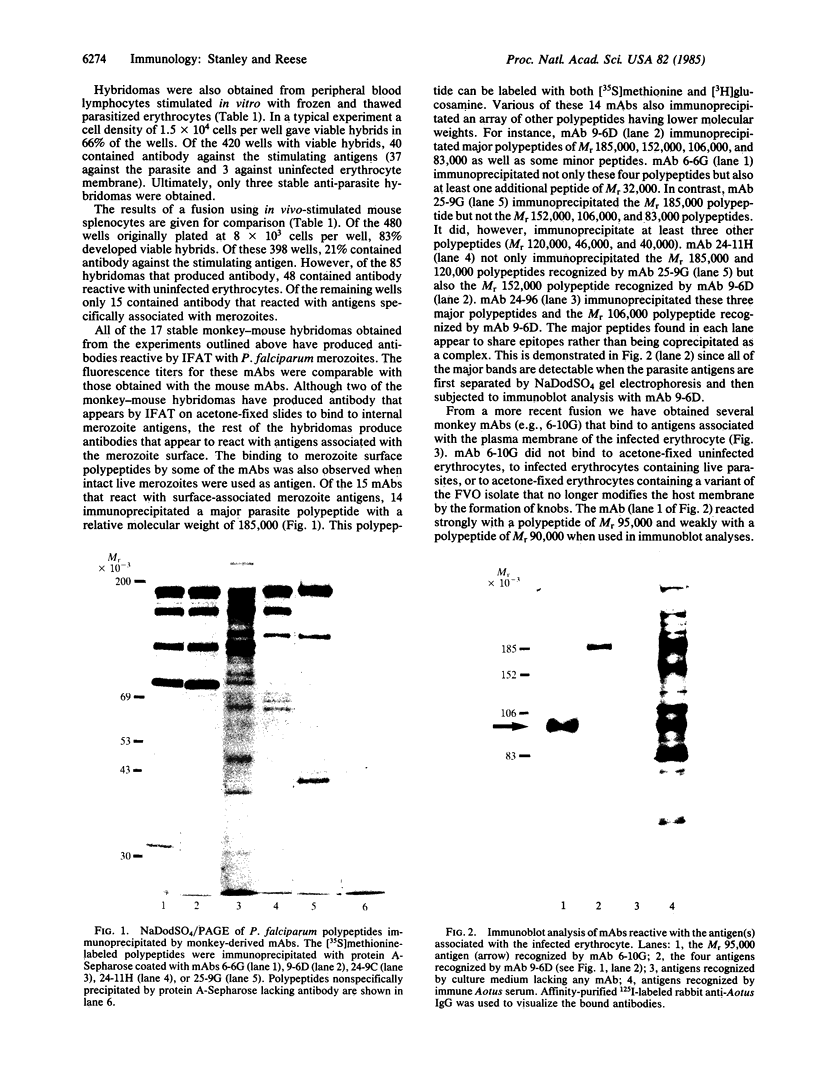
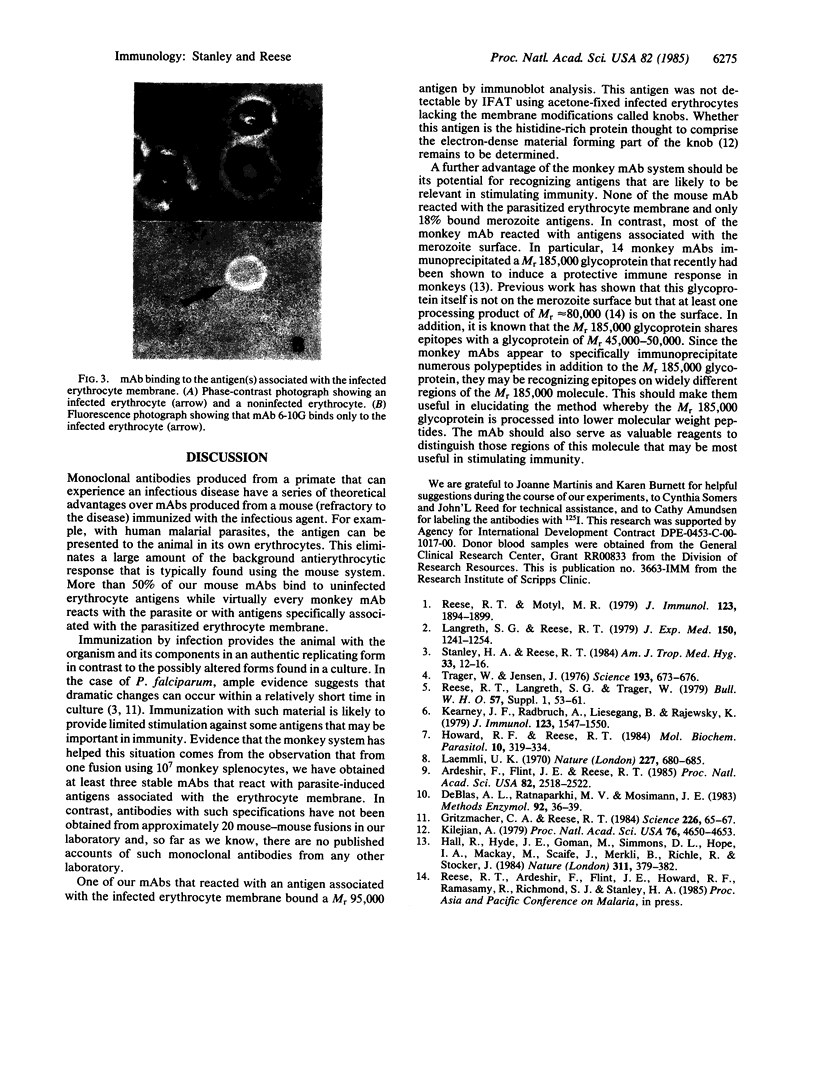
Images in this article
Selected References
These references are in PubMed. This may not be the complete list of references from this article.
- Ardeshir F., Flint J. E., Reese R. T. Expression of Plasmodium falciparum surface antigens in Escherichia coli. Proc Natl Acad Sci U S A. 1985 Apr;82(8):2518–2522. doi: 10.1073/pnas.82.8.2518. [DOI] [PMC free article] [PubMed] [Google Scholar]
- De Blas A. L., Ratnaparkhi M. V., Mosimann J. E. Estimation of the number of monoclonal hybridomas in a cell-fusion experiment. Methods Enzymol. 1983;92:36–39. doi: 10.1016/0076-6879(83)92007-4. [DOI] [PubMed] [Google Scholar]
- Gritzmacher C. A., Reese R. T. Reversal of knob formation on Plasmodium falciparum-infected erythrocytes. Science. 1984 Oct 5;226(4670):65–67. doi: 10.1126/science.6382613. [DOI] [PubMed] [Google Scholar]
- Hall R., Hyde J. E., Goman M., Simmons D. L., Hope I. A., Mackay M., Scaife J., Merkli B., Richle R., Stocker J. Major surface antigen gene of a human malaria parasite cloned and expressed in bacteria. 1984 Sep 27-Oct 3Nature. 311(5984):379–382. doi: 10.1038/311379a0. [DOI] [PubMed] [Google Scholar]
- Howard R. F., Reese R. T. Synthesis of merozoite proteins and glycoproteins during the schizogony of Plasmodium falciparum. Mol Biochem Parasitol. 1984 Mar;10(3):319–334. doi: 10.1016/0166-6851(84)90030-6. [DOI] [PubMed] [Google Scholar]
- Kearney J. F., Radbruch A., Liesegang B., Rajewsky K. A new mouse myeloma cell line that has lost immunoglobulin expression but permits the construction of antibody-secreting hybrid cell lines. J Immunol. 1979 Oct;123(4):1548–1550. [PubMed] [Google Scholar]
- Kilejian A. Characterization of a protein correlated with the production of knob-like protrusions on membranes of erythrocytes infected with Plasmodium falciparum. Proc Natl Acad Sci U S A. 1979 Sep;76(9):4650–4653. doi: 10.1073/pnas.76.9.4650. [DOI] [PMC free article] [PubMed] [Google Scholar]
- Laemmli U. K. Cleavage of structural proteins during the assembly of the head of bacteriophage T4. Nature. 1970 Aug 15;227(5259):680–685. doi: 10.1038/227680a0. [DOI] [PubMed] [Google Scholar]
- Langreth S. G., Reese R. T. Antigenicity of the infected-erythrocyte and merozoite surfaces in Falciparum malaria. J Exp Med. 1979 Nov 1;150(5):1241–1254. doi: 10.1084/jem.150.5.1241. [DOI] [PMC free article] [PubMed] [Google Scholar]
- Reese R. T., Langreth S. G., Trager W. Isolation of stages of the human parasite Plasmodium falciparum from culture and from animal blood. Bull World Health Organ. 1979;57 (Suppl 1):53–61. [PMC free article] [PubMed] [Google Scholar]
- Reese R. T., Motyl M. R. Inhibition of the in vitro growth of Plasmodium falciparum. I. The effects of immune serum and purified immunoglobulin from owl monkeys. J Immunol. 1979 Oct;123(4):1894–1899. [PubMed] [Google Scholar]
- Stanley H. A., Reese R. T. In vitro inhibition of intracellular growth of Plasmodium falciparum by immune sera. Am J Trop Med Hyg. 1984 Jan;33(1):12–16. doi: 10.4269/ajtmh.1984.33.12. [DOI] [PubMed] [Google Scholar]
- Trager W., Jensen J. B. Human malaria parasites in continuous culture. Science. 1976 Aug 20;193(4254):673–675. doi: 10.1126/science.781840. [DOI] [PubMed] [Google Scholar]




